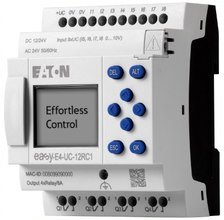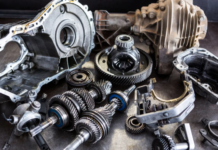Installing and maintaining industrial control systems like the Eaton Variable Frequency Drive (VFD) is crucial for optimizing motor performance, increasing energy efficiency, and extending the lifespan of critical equipment. When paired with supporting technologies such as the Watlow 4FT, Eaton DM1, and Eaton Easy E4, the Eaton VFD becomes part of a robust and intelligent automation system. In this article, we’ll cover best practices for getting the most out of your Eaton VFD installations—and how to ensure long-term success.
Why Eaton VFDs Are a Smart Investment
Eaton VFDs are designed to regulate the speed and torque of electric motors based on load demands. This reduces energy waste, protects equipment from stress, and allows for smoother, more precise control. They’re especially beneficial in HVAC systems, pumps, fans, and conveyor applications where variable loads are common.
But to fully realize these benefits, proper installation and regular maintenance are essential.
Best Practices for Installation
1. Size the VFD Correctly
Before installing an Eaton VFD, it’s important to select the correct model and rating for your motor’s voltage, current, and application type. Oversizing can be costly, while undersizing can result in overheating and failures.
2. Ensure Proper Environmental Conditions
VFDs should be mounted in areas with proper ventilation, away from heat sources, moisture, and dust. Use enclosures with appropriate IP ratings if the unit will be exposed to harsh conditions.
3. Use Shielded Cables for Motor Connections
Shielded cables help reduce electromagnetic interference (EMI), which can affect nearby sensitive equipment or cause erratic drive behavior.
4. Integrate with System Controls
Use the Eaton DM1 micro PLC or Eaton Easy E4 smart relay to integrate the VFD into a larger control system. These devices help synchronize VFD functions with broader automation goals, such as sequencing, timing, or responding to system faults.
Maintenance Tips for Long-Term Reliability
1. Perform Regular Visual Inspections
Check for signs of dust buildup, overheating, loose connections, or physical damage. A quick monthly check can prevent major issues down the line.
2. Monitor Operating Temperatures
Pairing the VFD with a Watlow 4FT temperature controller allows you to monitor and manage operating temperatures, ensuring that your drive remains within safe operating limits.
3. Update Firmware and Parameters as Needed
Stay up to date with Eaton’s firmware releases and periodically review parameter settings to ensure the drive is still optimized for your current application.
4. Schedule Preventive Maintenance
Keep logs of maintenance activity and schedule downtime inspections every 6–12 months. Look for early warning signs like increased heat, noise, or fault codes.
Building a Smarter System with Eaton and Watlow Technologies
- Eaton VFD handles precision motor control and energy savings
- Watlow 4FT ensures thermal stability for your motor and surroundings
- Eaton DM1 provides scalable logic for broader automation control
- Eaton Easy E4 simplifies basic operations like start/stop, alarms, or sequencing
Together, these devices form a powerful foundation for intelligent and efficient automation systems.
Need Help with Your VFD Setup?
At Seagate Controls, we specialize in custom automation solutions for industrial environments. Whether you’re installing your first Eaton VFD or upgrading to a fully integrated system using the Watlow 4FT, Eaton DM1, and Eaton Easy E4, our team is here to support you.
Call us today at 1.800.472.8812 to speak with an experienced controls expert and get a solution that works for your facility.




